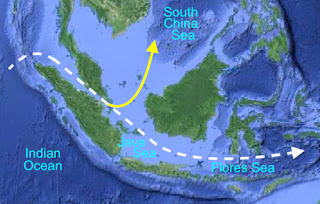While most theories and Land of Promise models show more-or-less only the major lands of Nephi, Zarahemla, and Bountiful, with little else covered, the actual scriptural record talks about numerous other areas. Even so, those areas and cities mentioned would not have been all that existed in the land. This is why we cover so many ancient Peruvian and Ecuadorian cultures and development areas to show the connection to the large populace areas and that people of antiquity lived there.
Map of the Qulla domain
The Cordillera Oriental of the Andes forms the eastern boundary of the Altiplano. Filled with copper and nitrate, the tableland there is joined to the frontiers of Peru and Bolivia. The Qulla had lived for centuries in the yungas, or high altitude tropical and subtropical moist broadleaf forest on the eastern slopes and valleys of the Andes, at the end of the Amazon rainforest—these eastern slopes and valleys form a transition zone between the southwest Amazon moist forests and Ucayali moist forests at lower elevations to the east and the central Andean puna at higher elevations to the west.
The Qulla began the Aymarization—speaking Aymara language—around the western shores of Lake Titicaca on the high altitude altiplano or puna of central South America, in a series of intermontane basins lying at about 12,000 feet above sea level.
The Qulla dominated Altiplano is sandwiched between the
western and eastern chains of the Andes Mountains—the eastern chain is called
the Cordillera Real (Left): Mountains of the Altiplano; (Right): A high
mountain valley of the Altiplano
The Inca even took the name of Qulla to name the entire area in the southeast of Peru, one of their “four quarters,” calling it Qullasuyu (Kholla Suyu)—an area covering the area north, west and south of Lake Titicaca, all of the northern area of Chile, the southwest area of Bolivia, and northwestern part of Argentina, which the Inca called the “Lower Quarter” (Terence N. D’Altroy, The Incas, Blackwell Publishing, Malden Massachusetts, 2005, pp42-43, 86-89; Julian H. Steward and Louis C. Faron, Native Peoples of South America, McGraw-Hill: New York, 1959, pp185-192).
A major Qulla cemetery with elaborate stone chullpas has been uncovered at the prehistoric site of Sillustani, located on a peninsula jutting out into Lake Umayo, west of Lake Titicaca beyond Lake Cupecocha.
The Qulla capital was Hatunqulla ("Colla, the Great") located 21-miles north of Puno in the Urcusuyu and was ruled by the dynasty of the Zapanas, whose capital was Azangaro, north of Hatunquilla, to whom they relied on for duality of government, which was common in the central Andean societies. While both were complementary but one still ruled over the other.
Burial chullpas, created by the Qulla people, dotted the landscape
around Sillustani
During the Qulla period there is evidence that warfare in the Andes was carried out only during the dry season after fields were harvested (Terence N. D'Altroy and Christine A. Hastorf, “Empire and Domestic Economy,” Springer, New York, 2002, p207; Rostworowski de Diez Canseco, Historia de los Inca, Group Editorial Bruño, Lima, 1999, p75).
With low labor needs on the home front between planting cycles, farmers transformed themselves into warriors, and these sinchis temporarily garnered their power to carry out a season of battles. With the onset of the rains, warriors may have then returned their attentions to tending their fields and power was redistributed among community members.
The cities around Lake Titicaca within
the Qulla Kingdom
Fray Alonso Ramos Gavilán y Díaz said that “the Qullas of Titikaka had that famous altar and shrine, was a waka, or huaca (spiritual shrine) from the Puquina Qullas and Uroqollas” (Alonso Ramos Gavilán, History of the Shrine of Our Lade of Copacabana, Ignacio Prado Pastor, 1988, p58). The Uroqollas, of course, are the Uros that are now seen building and living on islands on Lake Titicaca.
Some of the
houses built on hand-made reed islands on Lake Titicaca
Within the realm of the Qulla were three ethnic groups: Aymara, Puquina, and Uro (some Uros spoke Puquina and the others Uruquilla). Felipe Huaman Poma de Ayala, also known as Guamán Poma or Wamán Poma, who served in the 1560s-1570s AD as translator for Fray Cristóbal de Alborno, was a 16th Century Quechua nobleman born in Huamanga, Ayacucho, a little southeast of Pachacamac, halfway between that ancient city and Cuzco, in 1535.
He was known for chronicling and denouncing the ill treatment of the natives of the Andes by the Spanish after their conquest—he clearly distinguished Qulla ethnic groups and identified them as Qulla to the Aymaras, as Puquina Qulla to the Puquinas and as Uro Qulla to the Uros (Poma, The First New Chronicle and Good Government, written in 1615 as a handwritten manuscript to King Philip III of Spain, with the first part of the 1200-page document covering Andean life of both Inca and pre-Inca cultures prior to the invasion of the Spaniards.
While it cannot be clearly determined that the Qulla were a group of, descendants of, te Nepihte/Lamanite people of the Land of Promise, much about them rings true to the descriptions found in the Book of Mormon.





































